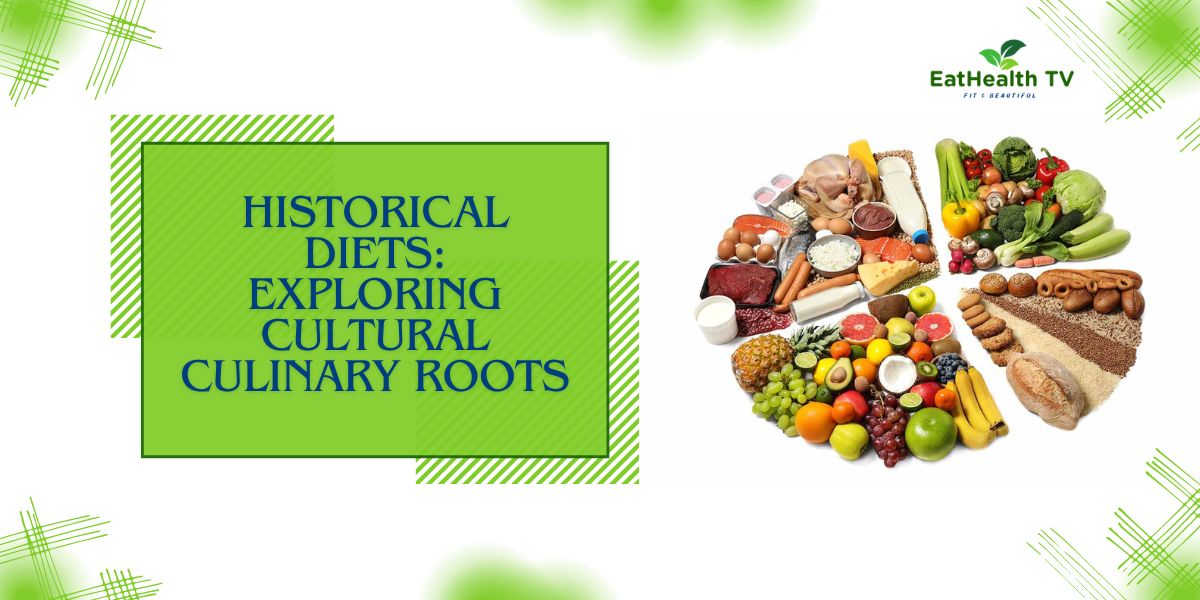Historical Diets: Exploring Cultural Culinary Roots
Unveiling Culinary Chronicles: A Journey Through Historical Diets

Historical Diets: Exploring Cultural Culinary Roots
The study of historical diets provides invaluable insights into the culinary traditions, cultural practices, and dietary habits of societies throughout history. From ancient civilizations to modern-day cultures, food has played a central role in shaping human societies, influencing social structures, economic systems, and even religious beliefs. In this comprehensive guide, we will embark on a journey through time to explore the diverse and rich tapestry of historical diets, delving into the culinary customs, ingredients, and cooking techniques that have shaped our collective culinary heritage.
Ancient Diets: Unearthing Culinary Treasures
The diets of ancient civilizations offer a glimpse into the culinary practices and dietary habits of societies that laid the foundations for modern civilization. From the grain-based diet of the Mesopotamians to the fish-centric cuisine of the Ancient Egyptians, ancient diets were influenced by geographic location, agricultural practices, and cultural traditions.
- Mesopotamian Diet: The fertile lands of Mesopotamia gave rise to one of the earliest known agricultural societies, with grains such as barley and wheat forming the backbone of the Mesopotamian diet. Bread, made from locally grown grains, was a staple food, while fruits, vegetables, and dairy products supplemented the diet.
- Ancient Egyptian Diet: The Nile River provided a rich source of food for the Ancient Egyptians, who relied heavily on fish as a dietary staple. In addition to fish, the Ancient Egyptians consumed a variety of grains, fruits, vegetables, and legumes, as well as meat from domesticated animals such as cattle, sheep, and poultry.
- Greco-Roman Diet: In ancient Greece and Rome, diet and cuisine were influenced by the Mediterranean climate and the availability of local ingredients. Olive oil, grains, fruits, and vegetables were dietary staples, while meat, fish, and dairy products were consumed in moderation. Wine also played a prominent role in Greco-Roman culture, both as a beverage and as an essential component of religious rituals and social gatherings.
Medieval Diets: Feasts, Fasts, and Culinary Exchange
The medieval period was characterized by a diverse array of culinary traditions, influenced by the interplay of religious, cultural, and economic factors. Feasting and fasting were integral aspects of medieval dietary practices, reflecting both religious observance and social status.
- Medieval European Diet: In medieval Europe, dietary habits varied depending on social class, geographic location, and seasonal availability of ingredients. The diet of the nobility was characterized by lavish feasts featuring an abundance of meat, game, and exotic spices, while peasants subsisted primarily on grains, legumes, vegetables, and dairy products.
- Islamic Dietary Traditions: Islamic dietary laws, as outlined in the Quran, prescribe certain dietary restrictions and guidelines for Muslims. Halal food, which adheres to Islamic dietary laws, prohibits the consumption of pork and alcohol, while emphasizing the consumption of wholesome, nourishing foods.
- Asian Culinary Heritage: The culinary traditions of Asia are as diverse as the continent itself, with each region boasting its own unique flavors, ingredients, and cooking techniques. From the rice-based diet of East Asia to the spice-infused cuisine of South Asia, Asian diets reflect a rich tapestry of cultural influences and culinary innovation. Just as we know Ancient Diets: Exploring Historical Nutrition Trends
Modern Diets: Globalization and Culinary Fusion
In the modern era, globalization has led to the exchange of culinary ideas, ingredients, and techniques across borders and cultures. As a result, modern diets have become increasingly diverse and eclectic, incorporating elements from various culinary traditions around the world.
- Mediterranean Diet: The Mediterranean diet, characterized by an emphasis on fruits, vegetables, whole grains, fish, and olive oil, has gained recognition for its health benefits and cultural significance. Inspired by the traditional dietary patterns of countries bordering the Mediterranean Sea, the Mediterranean diet has been linked to reduced risk of chronic diseases such as heart disease, diabetes, and cancer.
- Plant-Based Diets: In recent years, there has been a growing interest in plant-based diets, driven by concerns about health, environmental sustainability, and animal welfare. Plant-based diets emphasize the consumption of fruits, vegetables, legumes, nuts, and seeds, while minimizing or eliminating the intake of animal products.
- Global Cuisine: The proliferation of global cuisine has transformed the culinary landscape, with restaurants and food markets offering a diverse array of international flavors and dishes. From Thai curry to Mexican tacos, global cuisine reflects the cultural diversity and culinary creativity of our interconnected world.
Conclusion
In conclusion, the study of historical diets offers valuable insights into the culinary customs, cultural practices, and dietary habits of societies throughout history. From the grain-based diets of ancient Mesopotamia to the plant-based diets of the modern era, food has played a central role in shaping human civilization. By exploring the rich tapestry of historical diets, we gain a deeper understanding of our collective culinary heritage and the diverse array of flavors, ingredients, and cooking techniques that have shaped our culinary traditions. As we continue to evolve and innovate in the realm of food and nutrition, let us honor and celebrate the rich legacy of historical diets that have nourished and sustained humanity for millennia.




